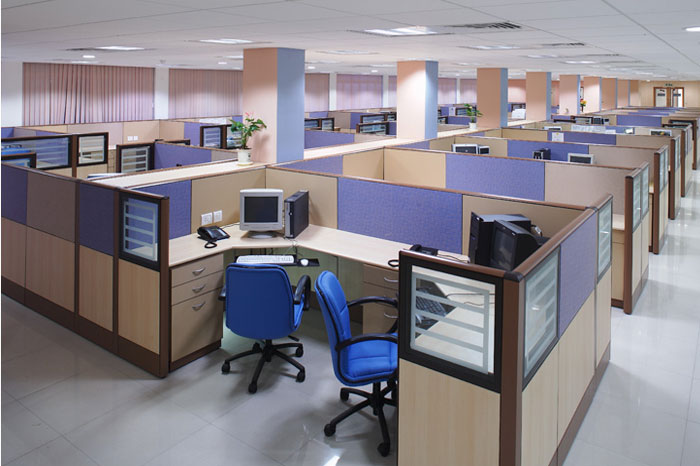Title: "Elevating Productivity and Aesthetics:
Unveiling the Essence of Office Interior Design"
The design of office interiors holds a profound impact on
the working environment, influencing employee morale, productivity, and the
overall atmosphere of the workplace. In this blog post, we explore the key
considerations and benefits associated with office interior design, shedding light on the importance of
creating a workspace that harmonizes functionality and aesthetics.
Reflecting Brand Identity: Office interiors serve as a visual
representation of a company's brand identity. From the color scheme and
furniture choices to the layout and overall design aesthetic, the office space
communicates the values and culture of the organization. A thoughtfully
designed office interior reinforces brand messaging and creates a cohesive and
professional image that resonates with both employees and visitors.
Enhancing Employee Productivity: The
design of the office environment plays a crucial role in influencing employee
productivity. Well-designed workspaces that consider factors such as lighting,
ergonomics, and spatial layout can contribute to a more conducive and inspiring
atmosphere. Thoughtful office interior
design encourages collaboration, reduces distractions, and provides
employees with a comfortable and motivating environment to perform at their
best.
Creating Functional Workspaces: Efficient office interior design goes beyond aesthetics; it prioritizes
functionality. The layout should be strategically planned to optimize workflow,
ensuring that different departments and teams have access to the resources and
spaces they need. Well-designed workstations, meeting rooms, and communal areas
contribute to a seamless and organized work environment.
Fostering Collaboration and Communication: Modern office interiors are increasingly designed to encourage collaboration and open communication among team members. The layout may incorporate open workspaces, collaborative zones, and breakout areas that facilitate impromptu meetings and idea exchange. Such design elements contribute to a more dynamic and interactive workplace culture.
Employee Well-being and Comfort: A focus on employee well-being is
integral to contemporary office interiordesign. Ergonomic furniture, natural lighting, proper ventilation, and
comfortable spaces contribute to the physical and mental well-being of
employees. Designing spaces that prioritize comfort and health fosters a
positive work environment and can contribute to higher employee satisfaction
and retention rates.
Incorporating Technology: In the digital age, office interiors need to accommodate evolving technological needs.
This includes considerations for integrated IT infrastructure, flexible
workstations with access to power outlets, and collaborative spaces equipped
with modern communication tools. Smart integration of technology enhances
efficiency and supports the evolving nature of work.
Adaptable and Flexible Spaces: Office interiors should be designed
to adapt to the changing needs of the organization. Flexible spaces that can be
easily reconfigured to accommodate growth, departmental changes, or new work
styles provide a long-term solution. Adaptable interiors ensure that the
workspace remains functional and relevant as the company evolves.
Sustainability and Green Design: The trend towards sustainable and eco-friendly design extends to office interiors. Incorporating green elements such as energy-efficient lighting, recycled materials, and indoor plants not only contributes to environmental responsibility but also enhances the overall well-being of occupants. Sustainable office interior design aligns with the values of modern businesses and promotes a healthier work environment.
Impressions on Clients and Visitors: The design of office interiors sets the tone for
first impressions on clients, partners, and visitors. A well-designed and
organized workspace communicates professionalism, attention to detail, and a
commitment to excellence. Creating a visually appealing and functional office
environment can positively influence external perceptions of the company.
In conclusion, the design of office interiors is a multifaceted endeavor that goes beyond
aesthetics. It is a strategic investment that influences brand identity,
employee productivity, collaboration, and overall workplace culture. By
prioritizing functionality, employee well-being, adaptability, and
sustainability, businesses can create office interiors that not only meet their
immediate needs but also contribute to long-term success and growth.

